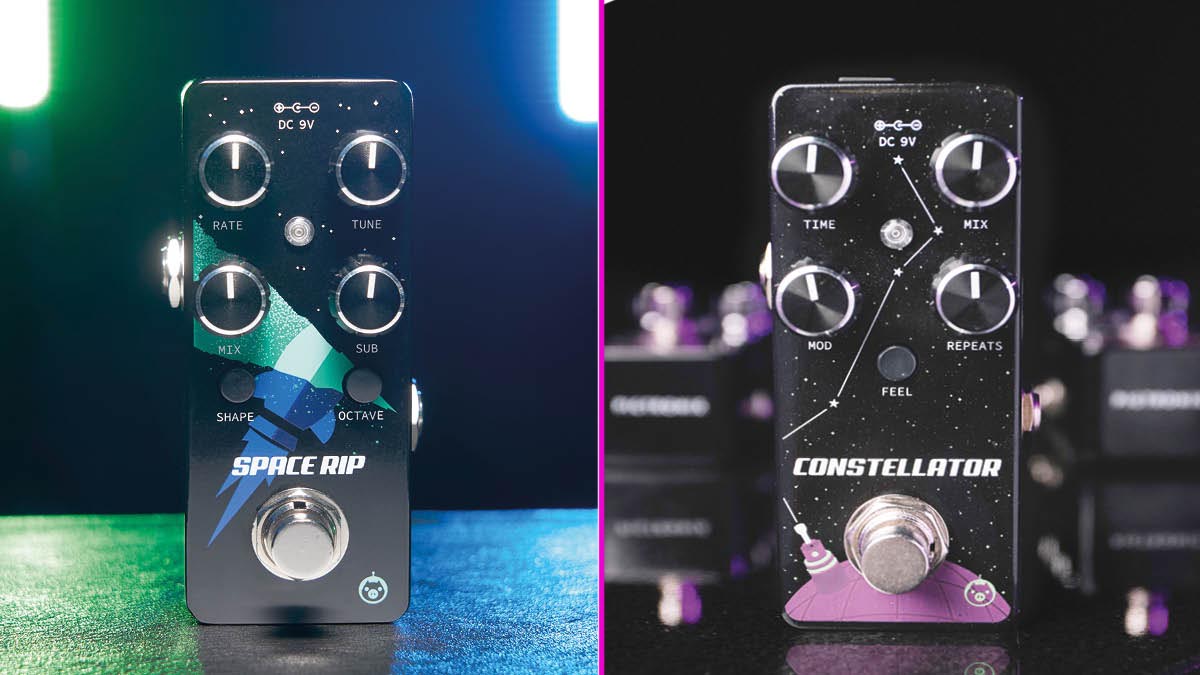GuitarPlayer Verdict
A great-sounding analog delay with optional modulation, the Constellator is versatile, especially for its size and price. The Space Rip, meanwhile, is a wildly fun and great-sounding analog synth pedal that boasts broader applications than its size might imply.
Pros
- +
Great analog delay and synth tones.
- +
Good value.
- +
Compact formats save pedalboard space.
- +
Made in USA.
Cons
- -
Constellator's mod speeds are fixed.
- -
Its vibrato might be a bit fast for some tastes.
- -
Space Rip might require some practice for the uninitiated.
You can trust Guitar Player.
Arguably the cutest cadre in all of the pedal brotherhood, the mini pedal has been with us for several years now. But rarely has anyone packed as much into it as Pigtronix has with its new series of stubby wonders. The company has a strong reputation for instilling its minis, including the Philosopher’s Tone Micro and Octava Micro, with clever features and deep-think designs.
Thus, each of the company's new offerings delivers more than you might expect to find on even a standard-sized pedal. We tested the Constellator Modulated Analog Delay and Space Rip Analog PWM Synthesizer, a pair of four-knob wonders stuffed into small metal enclosures.
While the diminutive pedals have no room for a battery, the savings in real estate means you can fit about 30 of them on the average pedalboard. (The new range also includes the Moon Pool Tremvelope Phaser, which was not available for review at the time of writing.)
We tested both pedals into a tweed Deluxe-style 1x12 combo, a Friedman Small Box head and 2x12 cab (with the Constellator delay both in front and in the effects loop), and a Fractal Axe-FX III with studio monitors. Our guitars were a Gibson Les Paul, a Fender Stratocaster, and a Novo Serus J.
Constellator Modulated Analog Delay
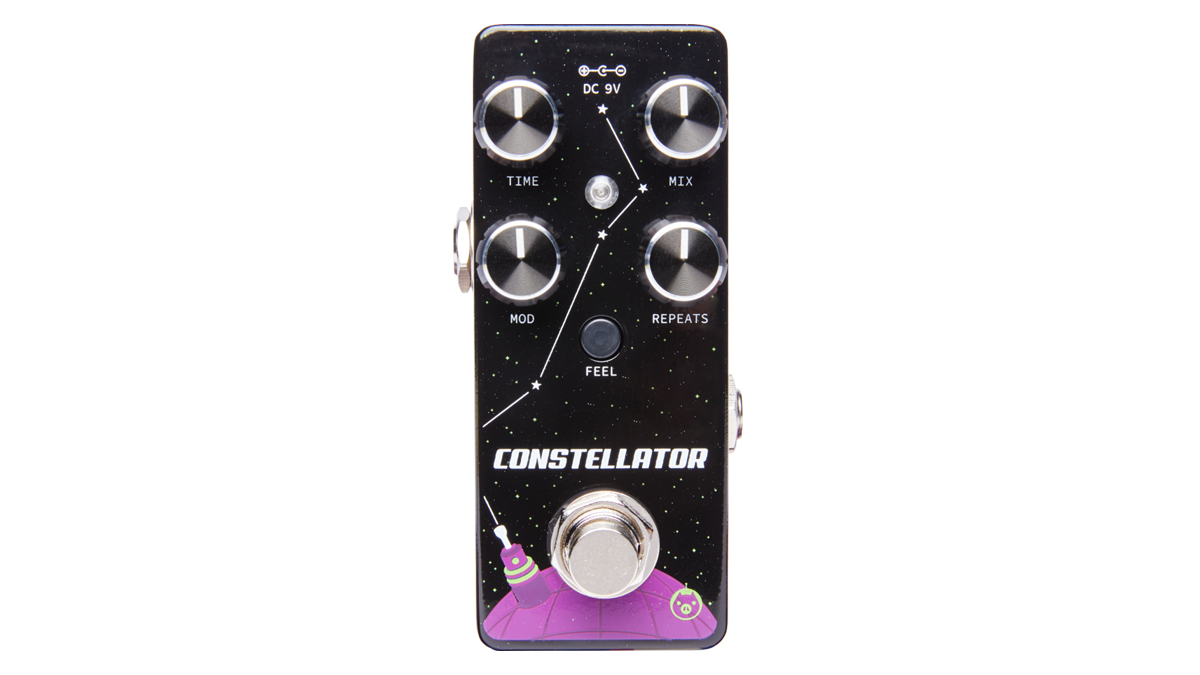
Many of the more compact delays of the past couple of decades have relied upon the wonders of digital signal processing (DSP). They’ve been constrained in part by the size of the tech necessary to do it in analog style, especially when anything more than the basic features was desired.
Thanks to a pair of reproductions of the vaunted Panasonic MN3005 bucket-brigade chips, the wee Constellator achieves an impressive 600ms maximum delay time, with texture-enhancing modulation thrown in to boot.
Controls include time, mix, repeats, and mod. The first three govern the usual echo parameters, while the last sets the depth of the modulation effect and dials it out altogether if desired.
There is also a push-button labeled Feel, which toggles between two chorus types, when pushed in, and vibrato, when popped out. As a nifty feature, the LED indicator changes from red to blue when vibrato is engaged.
In use, the Constellator delivered in a big way, which is to say don’t look at this little box purely as an option for space-challenged situations. For tone and function, it competes admirably with many analog delays in standard-sized enclosures, and likely blows a few out of the water as well.
All of the Constellator’s controls function as their names would lead you to expect, and each provides a broad range, with a smooth and usable taper. More importantly, perhaps, the sound of the repeats is both lush and rich even before you dial in modulation, and it’s sky’s-the-limit-lush once you start rolling up that knob.
The mod control is especially useful, allowing you to dial it out when you don’t want it, add the slightest flutter to thicken the echoes, or pour it on for a more obvious effect. To my ears, the chorus option sounded more natural for most applications.
The vibrato setting worked fine, and is a fun option to use occasion, but its speed is fixed at fast and can sound a little over the top, especially with advanced mod depths. It’s a small downside, though. The Constellator is an impressive analog delay by any measure, and it deserves an Editors’ Pick Award for its achievements.
Space Rip PWM Analog Synthesizer
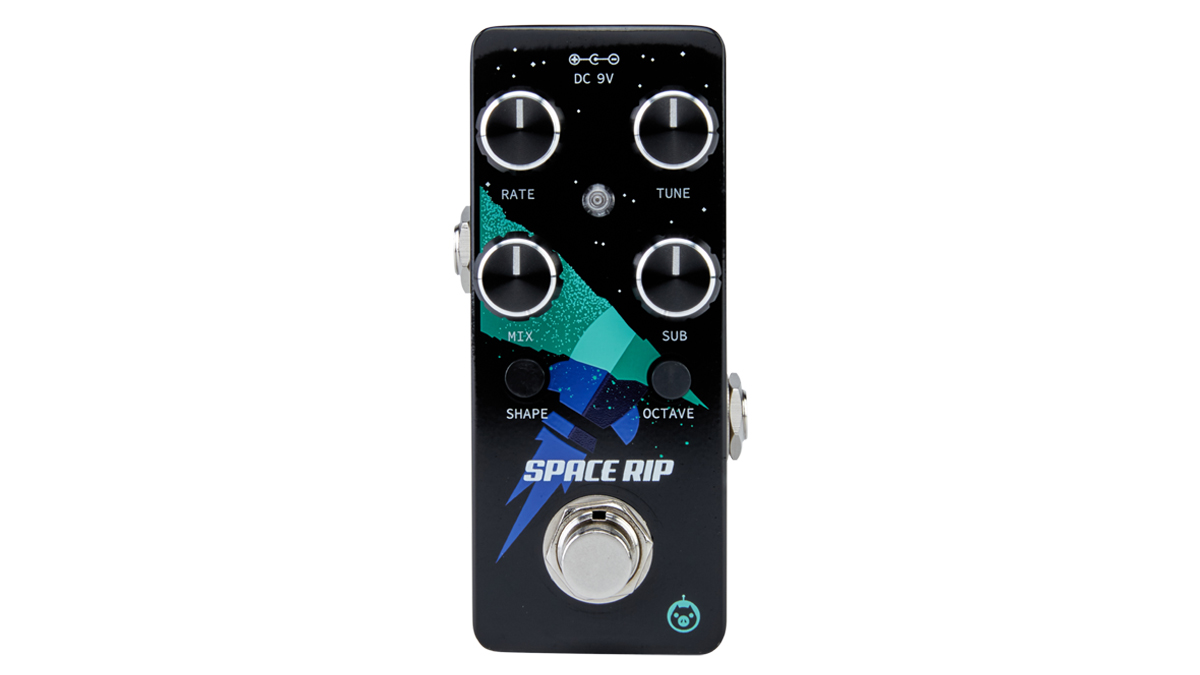
The notion of a genuine analog synthesizer in a box is exciting to many sonically adventurous guitarists, but put one in a box this size and it’s hard not to get giddy over it.
The PWM in the Space Rip’s name stands for pulse width modulation, which defines the process for creating the pulsing sawtooth or square waves that deliver this primal synth’s archetypal buzzsaw- or zipper-like sounds. The shape button selects the waveform, rate controls the mod speed, tune adjusts the voice above or below pitch, and mix provides the expected blend of wet and dry signals to the output.
You want more? Sub dials in a parallel octave-down voice, while the octave push button dips it down one octave further. In addition to packing all of this VCO-laden tech into its diminutive quarters, the Space Rip boasts what Pigtronix calls a “state-of-the-art tracking engine” that allows it to keep up with your speediest single-note lines, something many basic analog guitar synths of old struggled with.
After the first half hour with this little beastie, I felt ready to step in for the late Bernie Worrell, so capacious were my funky mono-lead-synth-riff-generating chops.
Like all genuine analog guitar synths, the Space Rip works fine with humbuckers but excels with single-coils. Neck pickups tend to encourage the best from it, dialing your guitar’s tone knob down (or off) can help purify the effect, and picking clean single-note lines greatly aids tracking.
At the end of the day, this pedal works and sounds great and is a bundle of fun. It’s worth noting that this is a monophonic effect – that is, it generates one note at a time, just like many classic and even modern analog synths. With lower mix settings you can hear something of the original chord underneath, but the effort will just freak out the PWM effect and spit sonic mud into the output.
Used properly, the Space Rip is a righteous tone generator, with power, girth, and versatility that belie its size. From gnarly fuzz-bass (with an alarmingly low rumble when the octave switch is dipped) to Velcro-ripped leads and guttural vowel-like ooze, the Space Rip can spice up your sonic repertoire.
It’s hard to imagine the thing not putting a smile on any guitarist’s face within 60 seconds of plugging in and playing.
Specifications
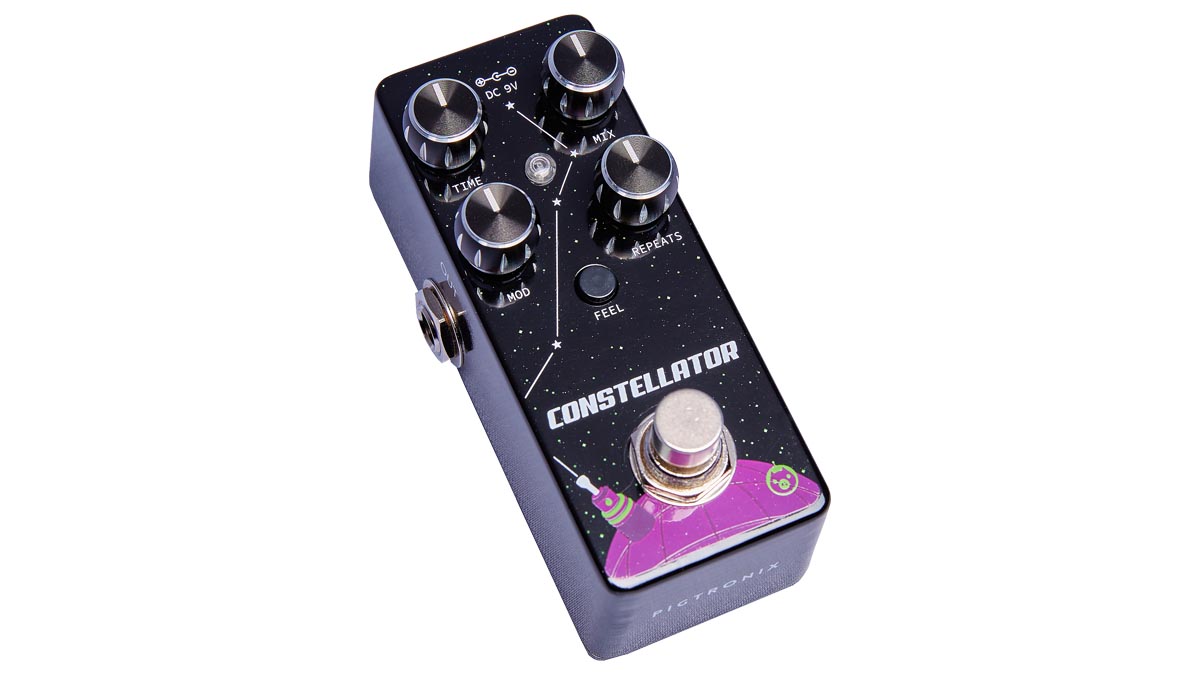
- CONSTELLATOR MODULATED ANALOG DELAY
- PRICE: $179 street
- CONTROLS: Time, mix, mod, repeats. Feel switch
- EXTRAS: True-bypass switching, LED indicator, center-negative 9V DC adaptor input
- SIZE: 3.75” x 1.5” x 1.5” (excluding feet and knobs)
- BUILT: Assembled in the USA
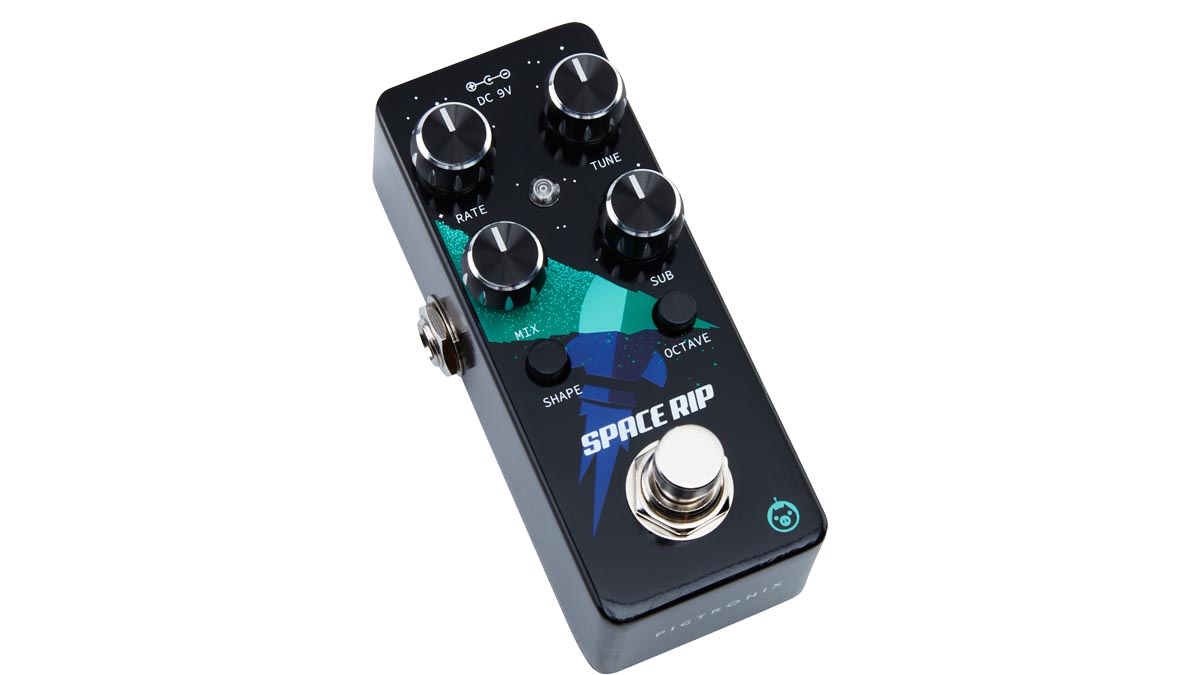
- SPACE RIP ANALOG PWM SYNTHESIZER
- PRICE: $179 street
- CONTROLS: Rate, tune, mix, sub. Shape and octave switches
- EXTRAS: True-bypass switching, LED indicator, center-negative 9V DC adaptor input
- SIZE: 3.75” x 1.5” x 1.5” (excluding feet and knobs)
- BUILT: Assembled in the USA
- CONTACT: Pigtronix
Dave Hunter is a writer and consulting editor for Guitar Player magazine. His prolific output as author includes Fender 75 Years, The Guitar Amp Handbook, The British Amp Invasion, Ultimate Star Guitars, Guitar Effects Pedals, The Guitar Pickup Handbook, The Fender Telecaster and several other titles. Hunter is a former editor of The Guitar Magazine (UK), and a contributor to Vintage Guitar, Premier Guitar, The Connoisseur and other publications. A contributing essayist to the United States Library of Congress National Recording Preservation Board’s Permanent Archive, he lives in Kittery, ME, with his wife and their two children and fronts the bands A Different Engine and The Stereo Field.
"The only thing missing is the noise from the tape loop." We review the Strymon EC-1 Single Head dTape Echo, a convincing take on a very special vintage tube Echoplex
"BigSky MX will be replacing the BigSky as my go-to reverb pedal. I’ve heard nothing that covers all the bases with such pristine and detailed audio quality." We crowned the Strymon BigSky MX the champ of multi-reverb pedals
